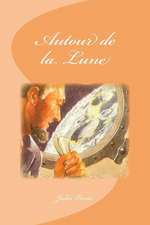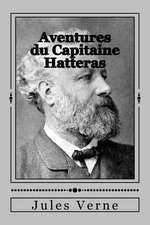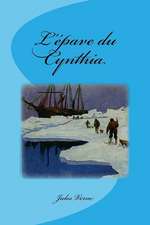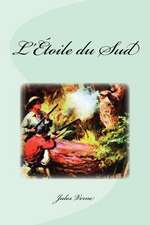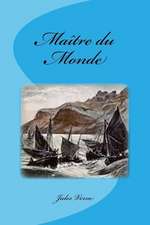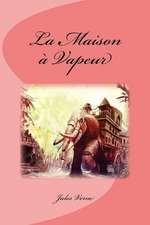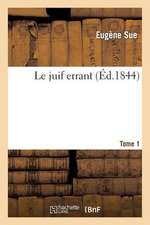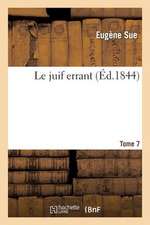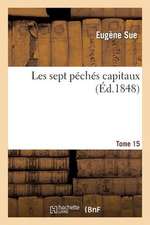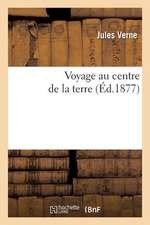Journey to the Center of the Earth: Classic Starts
Autor Jules Verne Ilustrat de Eric Freebergen Limba Engleză Hardback – 6 aug 2011 – vârsta de la 7 până la 9 ani
Din seria Classic Starts
- 6%
 Preț: 43.03 lei
Preț: 43.03 lei - 6%
 Preț: 43.03 lei
Preț: 43.03 lei - 6%
 Preț: 43.03 lei
Preț: 43.03 lei - 6%
 Preț: 42.58 lei
Preț: 42.58 lei - 6%
 Preț: 42.84 lei
Preț: 42.84 lei -
 Preț: 45.34 lei
Preț: 45.34 lei - 6%
 Preț: 42.67 lei
Preț: 42.67 lei - 6%
 Preț: 42.67 lei
Preț: 42.67 lei - 6%
 Preț: 43.21 lei
Preț: 43.21 lei - 6%
 Preț: 43.03 lei
Preț: 43.03 lei - 6%
 Preț: 43.21 lei
Preț: 43.21 lei - 6%
 Preț: 42.84 lei
Preț: 42.84 lei - 6%
 Preț: 43.03 lei
Preț: 43.03 lei - 6%
 Preț: 43.03 lei
Preț: 43.03 lei - 6%
 Preț: 43.03 lei
Preț: 43.03 lei - 6%
 Preț: 42.84 lei
Preț: 42.84 lei - 5%
 Preț: 43.93 lei
Preț: 43.93 lei -
 Preț: 34.58 lei
Preț: 34.58 lei -
 Preț: 45.68 lei
Preț: 45.68 lei - 5%
 Preț: 43.72 lei
Preț: 43.72 lei -
 Preț: 38.54 lei
Preț: 38.54 lei - 5%
 Preț: 44.28 lei
Preț: 44.28 lei - 6%
 Preț: 42.84 lei
Preț: 42.84 lei - 6%
 Preț: 42.67 lei
Preț: 42.67 lei - 5%
 Preț: 43.93 lei
Preț: 43.93 lei - 5%
 Preț: 37.63 lei
Preț: 37.63 lei - 6%
 Preț: 43.03 lei
Preț: 43.03 lei -
 Preț: 38.70 lei
Preț: 38.70 lei - 6%
 Preț: 37.18 lei
Preț: 37.18 lei -
 Preț: 49.63 lei
Preț: 49.63 lei -
 Preț: 49.63 lei
Preț: 49.63 lei -
 Preț: 49.63 lei
Preț: 49.63 lei -
 Preț: 49.63 lei
Preț: 49.63 lei -
 Preț: 49.63 lei
Preț: 49.63 lei - 33%
 Preț: 30.75 lei
Preț: 30.75 lei
Preț: 43.03 lei
Preț vechi: 45.77 lei
-6% Nou
8.23€ • 8.58$ • 6.82£
Carte disponibilă
Livrare economică 13-27 martie
Livrare express 27 februarie-05 martie pentru 23.93 lei
Specificații
ISBN-10: 1402773137
Pagini: 150
Ilustrații: b/w throughout, 10 illustrations
Dimensiuni: 142 x 198 x 16 mm
Greutate: 0.26 kg
Editura: Sterling Publishing
Seria Classic Starts
Descriere
Recenzii
is simply that he was one of the best storytellers
who ever lived."--Arthur C. Clarke
Textul de pe ultima copertă
A pioneer in the genre of science fiction writing, Jules Verne possessed an uncanny ability to imagine often with startling accuracy the future possibilities of science. In this classic novel, first published in 1864, the author introduces readers to Otto Lidenbrock, a professor of geology who ventures into a fantastical world within an extinct Icelandic volcano. Verne's vivid imagination and masterful storytelling ability has made this book a popular choice among readers for more than 140 years. This version is believed to be the most faithful rendition into English of this classic currently in the public domain. The few notes of the translator are located near the point where they are referenced."
Notă biografică
Extras
On the 24th of May, 1863, my uncle, Professor Liedenbrock, rushed into his little house, number 19 Königstrasse, one of the oldest streets in the oldest portion of the city of Hamburg.
Martha must have concluded that she was very much behindhand, for the dinner had only just been put into the oven.
“Well, now,” said I to myself, “if that most impatient of men is hungry, what a disturbance he will make!”
“M. Liedenbrock so soon!” cried poor Martha in great alarm, half opening the dining room door.
“Yes, Martha; but very likely the dinner is not half-cooked, for it is not two yet. Saint Michael’s clock has only just struck half past one.”
“Then why has the master come home so soon?”
“Perhaps he will tell us that himself.”
“Here he is, Monsieur Axel; I will run and hide myself while you argue with him.”
And Martha retreated in safety into her own dominions.
I was left alone. But how was it possible for a man of my undecided turn of mind to argue successfully with so irascible a person as the Professor? With this persuasion I was hurrying away to my own little retreat upstairs, when the street door creaked upon its hinges; heavy feet made the whole flight of stairs to shake; and the master of the house, passing rapidly through the dining room, threw himself in haste into his own sanctum.
But on his rapid way he had found time to fling his hazel stick into a corner, his rough broadbrim upon the table, and these few emphatic words at his nephew:
“Axel, follow me!”
I had scarcely had time to move when the Professor was again shouting after me:
“What! Not come yet?”
And I rushed into my redoubtable master’s study.
Otto Liedenbrock had no mischief in him, I willingly allow that; but unless he very considerably changes as he grows older, at the end he will be a most original character.
He was professor at the Johanneum, and was delivering a series of lectures on mineralogy, in the course of every one of which he broke into a passion once or twice at least. Not at all that he was overanxious about the improvement of his class, or about the degree of attention with which they listened to him, or the success which might eventually crown his labors. Such little matters of detail never troubled him much. His teaching was, as the German philosophy calls it, “subjective”; it was to benefit himself, not others. He was a learned egotist. He was a well of science, and the pulleys worked uneasily when you wanted to draw anything out of it. In a word, he was a learned miser.
Germany has not a few professors of this sort.
To his misfortune, my uncle was not gifted with a sufficiently rapid utterance; not, to be sure, when he was talking at home, but certainly in his public delivery; this is a want much to be deplored in a speaker. The fact is that during the course of his lectures at the Johanneum, the Professor often came to a complete standstill; he fought with willful words that refused to pass his struggling lips, such words as resist and distend the cheeks, and at last break out into the unasked-for shape of a round and most unscientific oath: then his fury would gradually abate.
Now, in mineralogy there are many half-Greek and half-Latin terms, very hard to articulate, and which would be most trying to a poet’s measures. I don’t wish to say a word against so respectable a science, far be that from me. True, in the august presence of rhombohedral crystals, retinasphaltic resins, gehlenites, fassaites, molybdenites, tungstates of manganese, and titanite of zirconium, why, the most facile of tongues may make a slip now and then.
It therefore happened that this venial fault of my uncle’s came to be pretty well understood in time, and an unfair advantage was taken of it; the students laid wait for him in dangerous places, and when he began to stumble, loud was the laughter, which is not in good taste, not even in Germans. And if there was always a full audience to honor the Liedenbrock courses, I should be sorry to conjecture how many came to make merry at my uncle’s expense.
Nevertheless my good uncle was a man of deep learning—a fact I am most anxious to assert and reassert. Sometimes he might irretrievably injure a specimen by his too great ardor in handling it; but still he united the genius of a true geologist with the keen eye of the mineralogist. Armed with his hammer, his steel pointer, his magnetic needles, his blowpipe, and his bottle of nitric acid, he was a powerful man of science. He would refer any mineral to its proper place among the six hundred elementary substances now enumerated, by its fracture, its appearance, its hardness, its fusibility, its sonorousness, its smell, and its taste.
The name of Liedenbrock was honorably mentioned in colleges and learned societies. Humphry Davy, Humboldt, Captain Sir John Franklin, General Sabine, never failed to call upon him on their way through Hamburg. Becquerel, Ebelman, Brewster, Dumas, Milne-Edwards, Sainte-Claire Deville, frequently consulted him upon the most difficult problems in chemistry, a science which was indebted to him for considerable discoveries, for in 1853 there had appeared at Leipzig an imposing folio by Otto Liedenbrock, entitled, “A Treatise upon Transcendental Chemistry,” with plates; a work, however, which failed to cover its expenses.
To all these titles to honor, let me add that my uncle was the curator of the museum of mineralogy formed by M. Struve, the Russian ambassador; a most valuable collection, the fame of which is European.
Such was the gentleman who addressed me in that impetuous manner. Fancy a tall, spare man, of an iron constitution, and with a fair complexion which took off a good ten years from the fifty he must own to. His restless eyes were in incessant motion behind his full-sized spectacles. His long, thin nose was like a knife blade. Boys have been heard to remark that that organ was magnetized and attracted iron filings. But this was merely a mischievous report; it had no attraction except for snuff, which it seemed to draw to itself in great quantities.
When I have added, to complete my portrait, that my uncle walked by mathematical strides of a yard and a half, and that in walking he kept his fists firmly closed, a sure sign of an irritable temperament, I think I shall have said enough to disenchant anyone who should by mistake have coveted much of his company.
He lived in his own little house in Königstrasse, a structure half brick and half wood, with a gable cut into steps; it looked upon one of those winding canals which intersect each other in the middle of the ancient quarter of Hamburg, and which the great fire of 1842 had fortunately spared.
It is true that the old house stood slightly off the perpendicular, and bulged out a little toward the street; its roof sloped a little to one side, like the cap over the left ear of a Tugendbund student; its lines wanted accuracy; but after all, it stood firm, thanks to an old elm which buttressed it in front, and which often in spring sent its young sprays through the windowpanes.
My uncle was tolerably well off for a German professor. The house was his own, and everything in it. The living contents were his goddaughter Gräuben, a young Virlandaise of seventeen; Martha; and myself. As his nephew and an orphan, I became his laboratory assistant.
I freely confess that I was exceedingly fond of geology and all its kindred sciences; the blood of a mineralogist was in my veins, and in the midst of my specimens I was always happy.
In a word, a man might live happily enough in the little old house in the Königstrasse, in spite of the restless impatience of its master, for although he was a little too excitable—he was very fond of me. But the man had no notion how to wait; nature herself was too slow for him. In April, after he had planted in the terra-cotta pots outside his window seedling plants of mignonette and convolvulus, he would go and give them a little pull by their leaves to make them grow faster. In dealing with such a strange individual there was nothing for it but prompt obedience. I therefore rushed after him.





